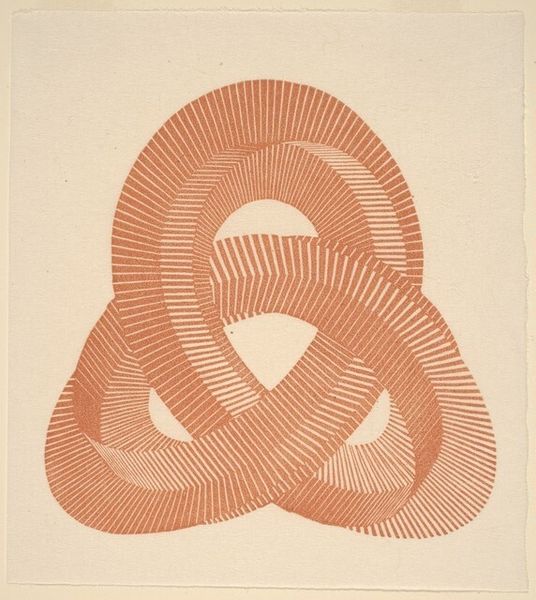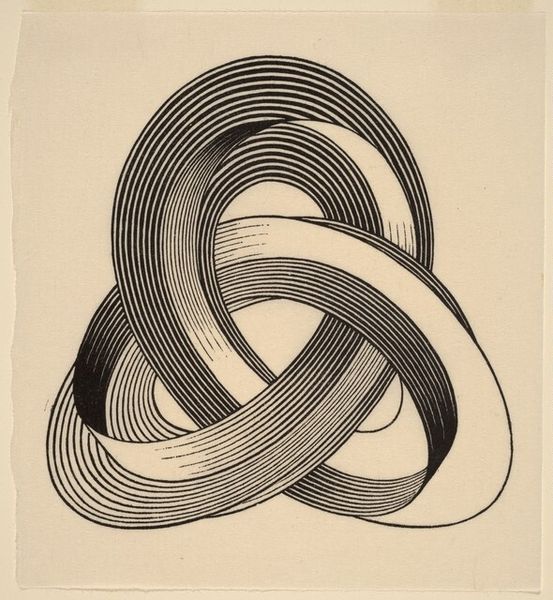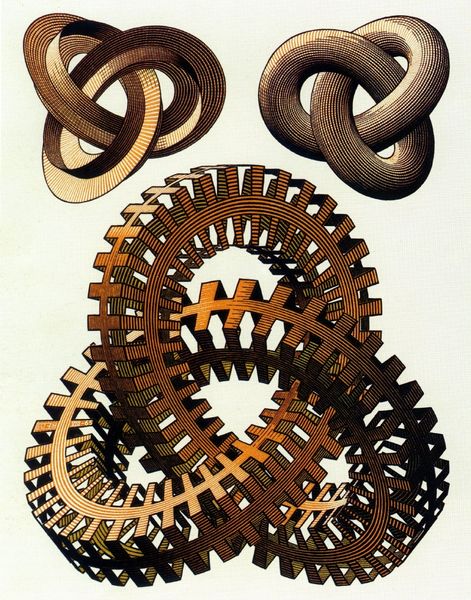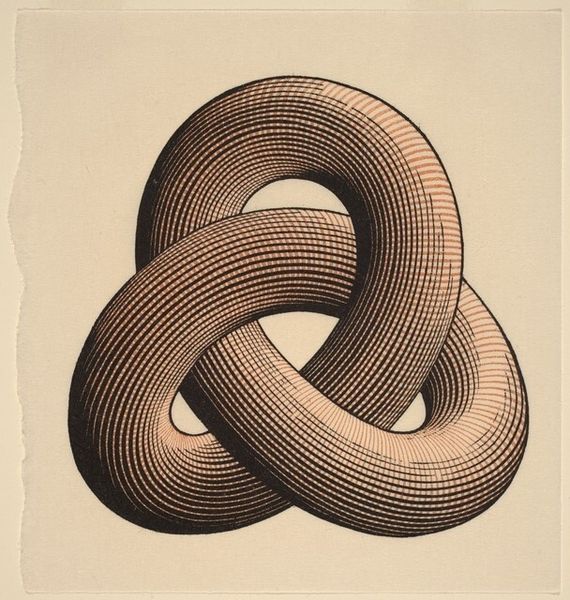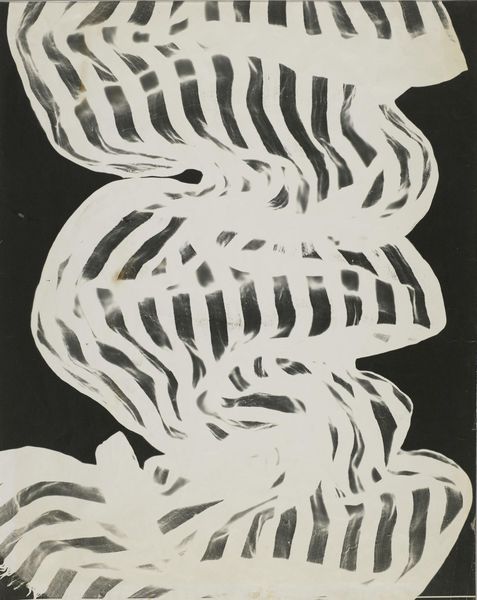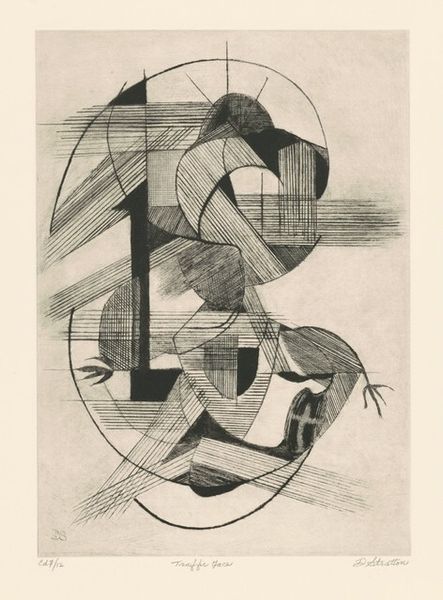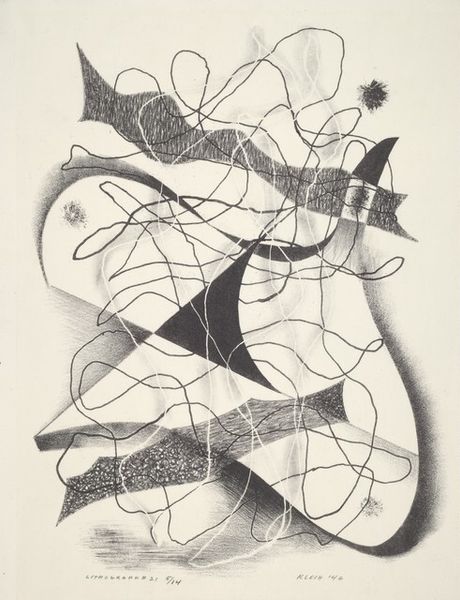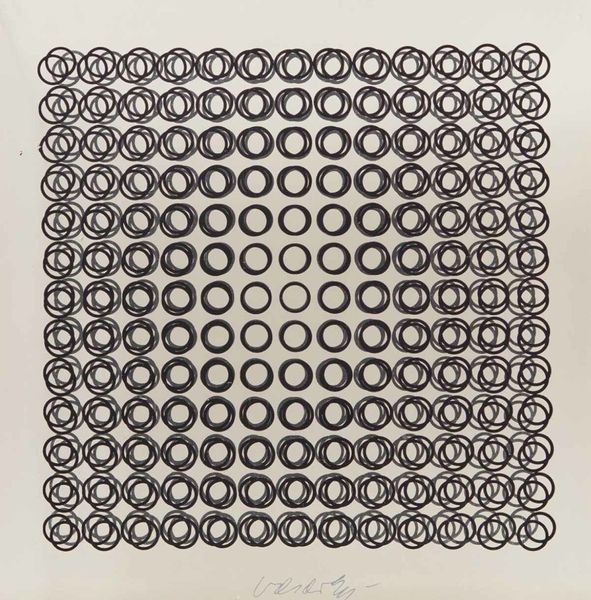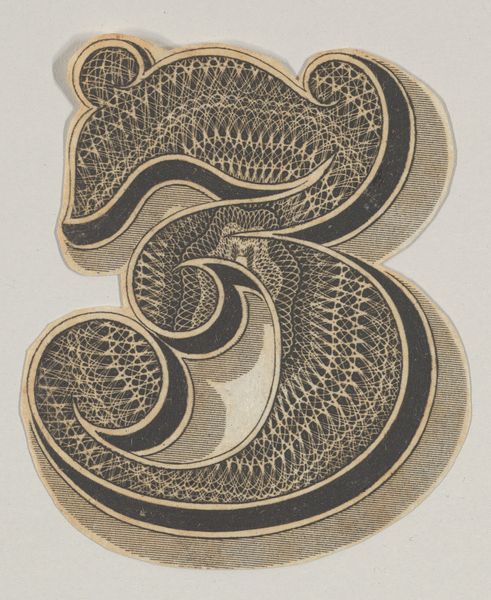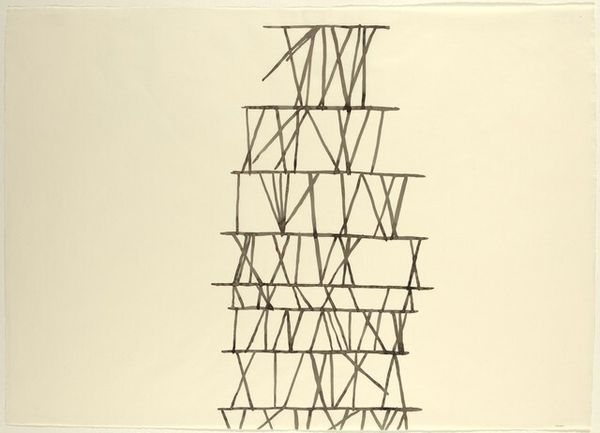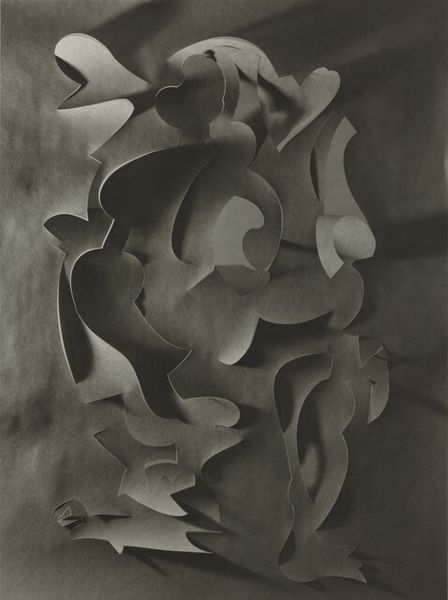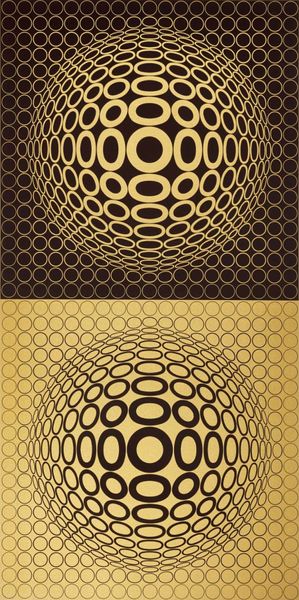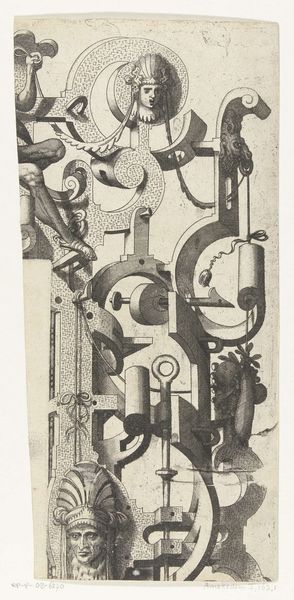
Copyright: National Gallery of Art: CC0 1.0
M.C. Escher made this print, Knots, using the medium of lithography. Escher's tessellations and impossible constructions were a product of a specific cultural moment in the mid-20th century. The rise of mass media and technological advancements allowed artists to explore new ways of representing reality and gave rise to the "Op Art" movement, which focuses on optical illusions. The "impossible objects" he portrays draw the viewer into a paradox; a mathematical problem in visual form. The social impact of Escher’s work lies in his popularization of mathematical concepts. His images often challenge the viewer's perception and prompt questions about the nature of reality. By creating a visual paradox, Escher can be said to be challenging the certainties of his era, calling into question what we "know" to be true. To understand Escher’s work more deeply, one might research the Op Art movement and the relationship between mathematics and art in the 20th century.
Comments
No comments
Be the first to comment and join the conversation on the ultimate creative platform.
